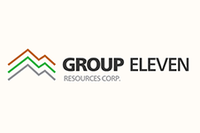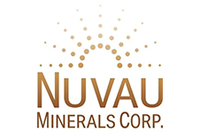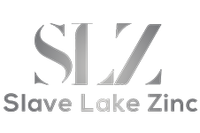Zinc Juniors in the Spotlight After Prices Hit Decade High

When zinc prices broke the $3,000-per-tonne mark earlier this month we reached out to juniors to see how they’ve been affected. Here’s what they said.
Zinc prices have been surging since the beginning of the month, and broke the $3,000-per-ounce mark on August 16. Supply concerns, a strong demand outlook from China and a decline in warehouse inventories have supported the increase.
With that in mind, the Investing News Network reached out to zinc juniors to get more insight on the price rally and the future of zinc of the zinc market.
Read on to learn what execs had to say. Responses were received from: Ascendant Resources (TSXV:ASND) CEO Chris Buncic, Avrupa Minerals (TSXV:AVU) Director Mark Brown, Callinex Mines (TSXV:CNX) CEO Max Porterfield, Canada Zinc Metals (TSXV:CZX) CEO Peeyush Varshney, Canadian Zinc (TSX:CZN) VP of Corporate Development Steve Dawson, Fireweed Zinc (TSXV:FWZ) CEO Brandon Macdonald, Margaux Resources (TSXV:MRL) CEO Tyler Rice and Sphinx Resources (TSXV:SFX) CEO Normand Champigny.
How higher zinc prices are affecting juniors
“The price rally is bringing the spotlight back onto high-quality junior zinc explorers,” Varshney (Canada Zinc Metals) said. “Certainly it is making the ‘in situ’ value of the large resource we have already delineated worth significantly more — close to US$8.5 billion in-the-ground value.”
Similarly, Buncic (Ascendant Resources) noted, “the company’s sales are tied directly to LME pricing — a 5-percent move in the zinc and lead price from today’s spot prices translates into an increase of $4 million in EBITDA on an annual basis for Ascendant.”
Champigny (Sphinx Resources) said he expects the recent price rally, combined with good exploration results, to translate into an increased share value for his company. Sphinx Resources is working together with mineral exploration agency SOQUEM to develop an asset in Quebec.
Brown (Avrupa Minerals) agreed, and said the surge in prices has brought interest from many companies looking to pursue joint ventures or invest in his company. Avrupa Minerals explores for zinc and copper in the prolific Iberian Pyrite Belt of Southern Portugal.
According to Dawson (Canadian Zinc), Canadian Zinc has also received more investor interest and institutional attention. The company plans to develop the Prairie Creek mine in Canada.
“The zinc price rally is improving the potential economics associated with our lead-zinc properties, in particular Jackpot, Jersey-Emerald and Sheep Creek in BC,” Rice (Margaux Resources) said.
Meanwhile, Macdonald (Fireweed Zinc) said that at first glance, the performance of zinc junior shares seem to be lagging behind the zinc price. “I attribute this to lofty expectations placed on this zinc rally by metals analysts and pundits over the last year. [There’s been] so much talk of $4,000 per tonne that investors may not be impressed yet, although $3,000 per tonne is an important milestone,” he explained.
In the case of Callinex, Porterfield said the company evaluates long-term exploration and development opportunities instead of relying on day-to-day price movements.
What’s ahead for zinc prices?
Many analysts remain optimistic about zinc prices in 2017, and the zinc juniors we reached out to agree.
Brown (Avrupa Minerals) believes prices will continue to increase, stabilizing at over $1.50 per pound. “It takes a long time for new mines to come on stream, and exploration budgets have been low for well over five years now,” he said, adding that declining zinc inventory levels will also help push prices higher.
Macdonald (Fireweed Zinc) agreed, saying that even if major miner Glencore (LSE:GLEN) restarts zinc production and China stops shutting down mines, he still doesn’t see a long-term solution to the problem of insufficient investment in supply.
“The zinc price should go up further, although it does appear to be a ‘slower-burn’ situation than had been projected by many analysts,” he said.
Similarly, Champigny (Sphinx Resources) believes prices will continue to receive upward pressure due to the environmental awakening in China, growing demand from Asia and a lack of significant new zinc mines. For Buncic (Ascendant Resources), the key to keeping prices elevated will be continued positive global economic growth.
In terms of price predictions for the rest of the year, Rice (Margaux Resources) sees $1.40 per pound ($3,090 per tonne) as zinc’s near-term trading range.
“China’s economic growth proved stronger in the first half of the year than expected. If infrastructure investment activity carries on this way, we should see it continuing to support the price of zinc, and I can see our beginning-of-the-year predictions proving to be lower than year-end prices,” he added.
Meanwhile, Porterfield (Callinex Mines) believes zinc prices will stay high over the long term, with prices staying above $3,000 per tonne for the medium term.
Key zinc market factors to watch
The zinc market has been in deficit for the past several years, and the CEOs we spoke to don’t see that trend changing in the short term.
“Unless there is a significant decline in demand from Asia and major mine production is commissioned in the near term, the deficit will continue for several years,” Champigny (Sphinx Resources) commented.
CRU analysts see the zinc market being in deficit by 725,000 tonnes in 2017, and don’t expect the market to return to surplus until the end of next year. What’s more, in a recent Reuters survey analysts called for an average zinc market deficit of 412,000 this year tonnes this year.
“I don’t think there’s any solution that can come on stream to pull 2017 out of deficit. [The zinc market] has had anemic investment in both development of existing assets and discovery of new ones,” Macdonald (Fireweed Zinc) said.
As the last quarter of the year approaches, there are several factors zinc-focused investors should keep an eye before the year ends.
According Porterfield (Callinex Mines), one of the most important short-term indicators that investors should monitor are zinc warehouse levels. Similarly, Buncic (Ascendant Resources) noted, “the most important factor to watch is global growth rates and the release of so called hidden inventory, if any.”
Varshney (Canada Zinc Metals) mentioned the number of Chinese zinc mines that have been shutting down due to environmental concerns as a critical factor to watch.
In terms of issues in the short run, strikes or disruptions at mines could boost prices further, while production from new mines could slow prices down, said Brown (Avrupa Minerals). “Recycling also tends to increase as prices go up, [and] that slows the increase in price,” he added.
In the same vein, Rice (Margaux Resources) said the scrap market could have a more material impact on prices as recycling technologies improve and become more economical as prices increase. “Additionally, if the price of silver increases, there may be an increase in production of zinc as a credit to silver,” he said.
Macdonald (Fireweed Zinc) said investors should play close attention to the demand side of the market, as a stall in demand growth could soften the zinc space.
“Although I maintain that it would still not solve the problem of underinvestment in supply, rather just push the problem out a few years as more assets come offline without replacement,” he added.
Don’t forget to follow us at @INN_Resource for real-time news updates!
Securities Disclosure: I, Priscila Barrera, hold no direct investment interest in any company mentioned in this article.
Editorial Disclosure: Ascendant Resources, Avrupa Minerals, Fireweed Zinc, Margaux Resources and Sphinx Resources are clients of the Investing News Network. This article is not paid-for content.
Editorial Disclosure: The Investing News Network does not guarantee the accuracy or thoroughness of the information reported in contributed article. The opinions expressed in these interviews do not reflect the opinions of the Investing News Network and do not constitute investment advice. All readers are encouraged to perform their own due diligence.


